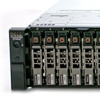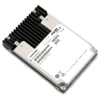SUSE Enterprise Storage is a software-defined storage solution powered by Ceph designed to help enterprises manage the ever-growing data sets. Further, SUSE aims to help by taking advantage of favorable storage economics as hard drives continue to get larger and flash prices continue to fall. While typically configured as a hybrid, Ceph is ultimately as flexible as the












 Amazon
Amazon